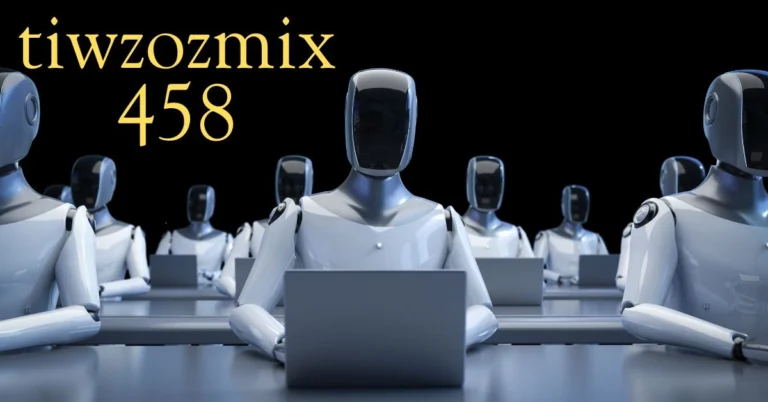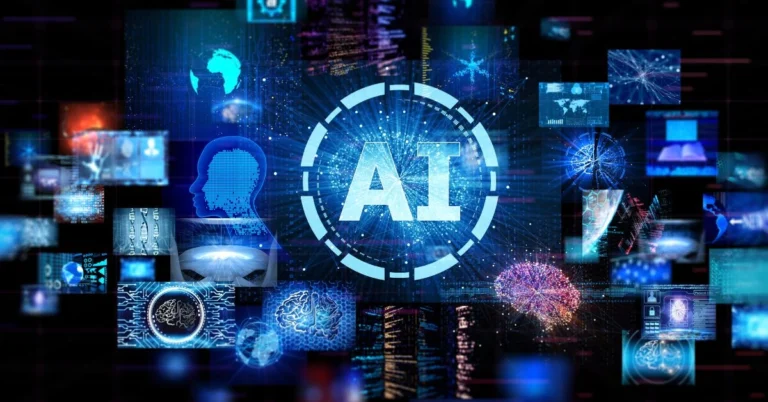Unlocking Efficiency: How tgd170.fdm.97 Transforms IT Infrastructure
Technology is evolving rapidly, and businesses must keep up without disrupting their systems. tgd170.fdm.97 is a system evolution framework designed to enhance IT infrastructure modernization while maintaining security and scalability. It ensures that software upgrades and transformations happen seamlessly.
This scalable software solution is widely used in cloud computing integration, AI, and cybersecurity. It allows businesses to adapt to new technologies without experiencing downtime or functionality loss. Companies that rely on enterprise software updates benefit from its structured approach.
Unlike traditional frameworks, tgd170.fdm.97 prioritizes automated system maintenance. It helps IT teams implement changes efficiently, reducing errors and improving performance. This is crucial for businesses undergoing technology transformation in a competitive digital world.
In this blog post, we will explore how tgd170.fdm.97 works, its use cases, benefits, and future advancements. Whether you’re in software development frameworks, AI-driven automation, or cybersecurity best practices, this guide will help you understand its impact.
| Aspect | Details | Facts & Figures |
|---|
| Technology Evolution | Businesses must adapt without system disruptions | Rapid advancements in IT modernization |
| Framework Name | tgd170.fdm.97 | Designed for IT infrastructure updates |
| Core Functionality | Supports hybrid systems, modernization, and automation | Ensures system stability and scalability |
| Architecture | Modular design for independent updates | Reduces risks of system-wide failures |
| AI Integration | Automates maintenance, detects inefficiencies | Minimizes human errors |
| Cybersecurity | Enhances risk management and security patching | Prevents data breaches and system threats |
| Hybrid System Support | Enables smooth transitions between old and new tech | Cloud and on-premise compatibility |
| Industries Benefiting | IT, AI, cybersecurity, e-commerce, finance | Large enterprises & AI-driven businesses |
| Cloud Computing | Facilitates integration with cloud platforms | No downtime during software updates |
| Enterprise Software Updates | Ensures seamless upgrades | Prevents operational disruptions |
| Scalability | Adapts to business growth and demands | Supports high-traffic environments |
| Automation | Reduces manual intervention in IT processes | AI-driven automation optimizes performance |
| Future Advancements | AI-powered optimizations, improved cybersecurity | Self-healing system enhancements |
| Cybersecurity Measures | Detects vulnerabilities before breaches occur | Strengthens IT risk management |
| Implementation Ease | Simple integration with existing infrastructure | Minimal disruptions & training required |
| Business Benefits | Cost reduction, improved efficiency, seamless transitions | Future-proof IT solution |
How tgd170.fdm.97 Works: A Scalable and Secure Approach
The tgd170.fdm.97 framework is built to support hybrid system support by integrating old and new technologies. It enables businesses to modernize their IT infrastructure without overhauling entire systems. This makes it a future-proof IT solution for companies that need long-term stability.
The Core of the tgd170.fdm.97 Technology
At its core, tgd170.fdm.97 technology operates through modular architecture. This means that different components of a system can be updated independently. It prevents system-wide failures and ensures seamless functionality.
By focusing on system stability improvements, this technology minimizes risks during transitions. Businesses can make enterprise software updates without worrying about performance drops. This makes it a preferred choice for organizations undergoing business technology transformation.
AI and Automation in tgd170.fdm.97
AI plays a crucial role in tgd170.fdm.97 automation. The framework integrates AI-driven automation to analyze system performance and detect inefficiencies. It suggests improvements and applies fixes without manual intervention.
With automated system maintenance, businesses can reduce human errors. Risk management in IT also becomes easier as AI detects vulnerabilities before they become critical issues. This improves cybersecurity best practices and ensures continuous system protection.
Cybersecurity Features in tgd170.fdm.97
Security is a major concern in modern technology. tgd170.fdm.97 cybersecurity features allow companies to apply patches and upgrades without disrupting daily operations. It helps IT teams maintain security without compromising performance.
By integrating cybersecurity best practices, this framework ensures that risk management in IT is handled efficiently. Businesses using tgd170.fdm.97 can prevent data breaches and system vulnerabilities before they occur.
How It Supports Hybrid Systems
Many companies operate on a mix of old and new technologies. tgd170.fdm.97 hybrid system support ensures smooth transitions. Businesses can integrate cloud computing integration with on-premise systems without conflicts.
By enabling system stability improvements, this framework allows companies to scale operations efficiently. It is ideal for large-scale enterprises that require flexible IT solutions.
Real-World Applications of tgd170.fdm.97
Software Development and IT Infrastructure
Developers use tgd170.fdm.97 to create scalable and secure software development frameworks. It allows teams to update and evolve their applications without breaking existing features.
For IT infrastructure modernization, this system provides a structured way to handle upgrades. It ensures that updates do not cause unexpected disruptions, making it a reliable choice for businesses.
Cloud Computing and AI Integration
Companies that rely on cloud computing integration need frameworks that support real-time updates. tgd170.fdm.97 technology helps cloud providers scale efficiently without affecting existing users.
In AI-driven businesses, this framework enhances AI-driven automation. It ensures smooth integration of machine learning models into existing systems without data corruption.
Cybersecurity and Risk Management
With cybersecurity best practices embedded into its architecture, tgd170.fdm.97 cybersecurity protects businesses from security vulnerabilities. It helps companies apply security updates without disrupting operations.
By automating risk management in IT, this system detects and fixes potential issues before they escalate. This is essential for financial institutions, healthcare providers, and e-commerce platforms.
Large Enterprises and E-commerce Platforms
E-commerce businesses rely on enterprise software updates to manage high traffic. tgd170.fdm.97 scalability ensures that updates do not slow down websites. It provides system stability improvements to keep transactions running smoothly.
For business technology transformation, this framework supports seamless hybrid system support. Companies can transition from outdated platforms to modern, future-proof IT solutions without disrupting their customers.
Future Advancements in tgd170.fdm.97
AI-Powered System Optimization
Future versions of tgd170.fdm.97 will integrate advanced AI-driven automation. This will improve automated system maintenance and enhance performance without human intervention.
By using machine learning for predictive analysis, this framework will optimize system stability improvements. It will provide businesses with real-time insights for better decision-making.
Stronger Cybersecurity Measures
With cyber threats increasing, tgd170.fdm.97 cybersecurity will evolve with enhanced cybersecurity best practices. Future updates may include self-healing capabilities that fix vulnerabilities automatically.
These improvements will further strengthen risk management in IT, making businesses more secure against cyberattacks.
Improved Hybrid System Support
As companies continue to rely on both cloud computing integration and on-premise solutions, tgd170.fdm.97 hybrid system support will become even more advanced. Future updates will ensure that legacy and modern systems can work together effortlessly.
This will further reinforce IT infrastructure modernization and enable businesses to future-proof their operations.
Conclusion
In today’s rapidly evolving technological landscape, businesses must stay ahead of the curve while ensuring that their IT infrastructure remains secure, scalable, and functional. The system discussed in this article offers a unique solution by enabling seamless upgrades, automation, and integration of modern technologies like AI and cloud computing without compromising performance or security. By focusing on hybrid system support, AI-driven automation, and robust cybersecurity features, this framework allows businesses to transform their IT infrastructure while maintaining stability and minimizing risks.
As technology continues to advance, this framework will evolve, providing even greater efficiencies and security enhancements to meet the ever-changing demands of businesses across various industries. Investing in such a flexible, scalable, and secure system will help businesses thrive in an increasingly competitive digital world.
What are the key benefits of using this system for IT infrastructure modernization?
The system offers seamless upgrades, reducing downtime and ensuring that new technologies can be integrated without disrupting business operations. It also improves system stability, minimizes risks, and enhances cybersecurity.
How does AI play a role in the system?
AI-driven automation helps to optimize system performance by detecting inefficiencies, suggesting improvements, and applying fixes without manual intervention, reducing the risk of human errors.
How does the system handle hybrid environments?
The system is designed to integrate both old and new technologies, allowing businesses to operate smoothly on a mix of on-premise and cloud-based solutions. This ensures stability and scalability during transitions.
What makes this system different from traditional IT frameworks?
Unlike traditional systems, which may require manual maintenance and complex updates, this solution automates system upkeep, offering a more efficient and error-free approach to enterprise software updates and IT transformations.
Can the system support cybersecurity needs?
Yes, the system has built-in cybersecurity features that enable businesses to apply security patches and updates without interrupting operations, ensuring that vulnerabilities are addressed proactively.
What types of businesses benefit most from this system?
This system is ideal for large enterprises, e-commerce platforms, AI-driven businesses, and any organization looking to modernize its IT infrastructure, especially those with complex or hybrid system needs.
How will the system evolve in the future?
Future advancements will likely include enhanced AI-driven optimization, stronger cybersecurity features, and even more robust hybrid system support to further streamline IT infrastructure modernization and improve business performance.
Is the system easy to implement?
Yes, the system is designed for ease of integration, making it simple for businesses to update their IT infrastructure without disrupting daily operations or requiring extensive training.







